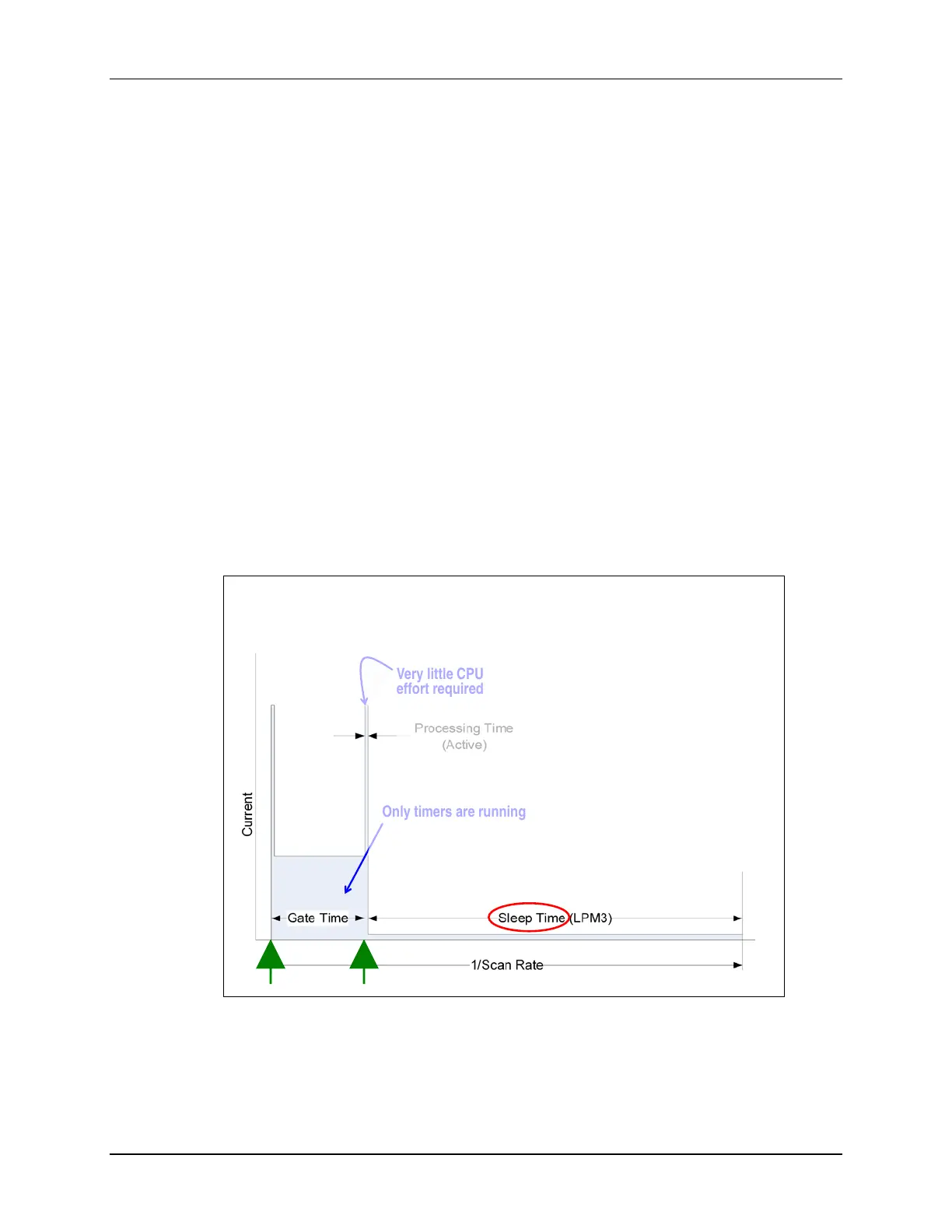Interrupts, The Big Picture
Processor States and Interrupts
In a previous chapter we covered many of the MSP430’s processor states. To summarize, the
MSP430 CPU can reside in: Reset, Active, or one of many Low-Power Modes (LPM). In many
cases, interrupts cause the CPU to change states. For example, when sitting in Low Power
Mode, an interrupt can “wake-up” the processor and return it to its active mode.
To help demonstrate this point, we stole the following slide from a discussion about Capacitive
Touch. While most of this slide’s content is not important for our current topic, we thought the
current vs time graph was interesting. It tries to visually demonstrate the changing states of the
device by charting power usage over time.
Notice the four states shown in this diagram:
• Notice how the current usage goes up at the beginning event – this is when the CPU is
woken up so it can start a couple of peripherals (timers) needed to read the CapTouch
button.
• The CPU can then go back to sleep while the sensor is being ‘read’ by the timers.
• When the read is complete (defined by something called “Gate” time, the CPU gets
interrupted and wakes up again in order to calculate the CapTouch button’s value from the
sensor data.
• Finally the CPU (and CapTouch hardware) can go back to sleep and wait for another system
wake-up event.
Interrupts Help Support Ultra Low Power
Only timers are running
Very little CPU
effort required
Lots of sleep time
Keep CPU asleep (i.e. in Low
Power Mode) while waiting for
event
Interrupt ‘wakes up’ CPU when
it’s required
Another way to look at it is
that interrupts often cause a
program state change
Often, work can be done by
peripherals, letting CPU stay in
LPM (e.g. Gate Time)
MSP430 Workshop - Interrupts 5 - 5

